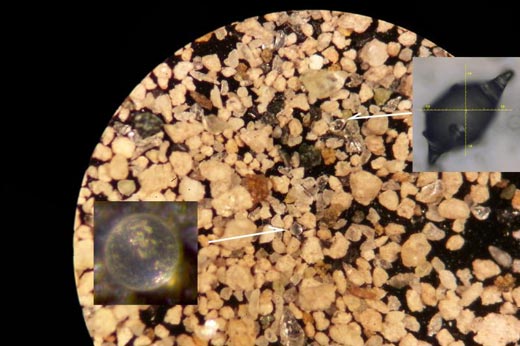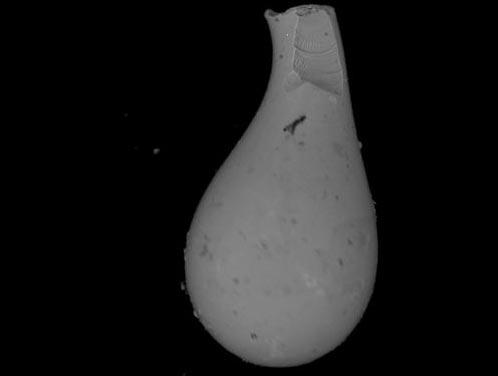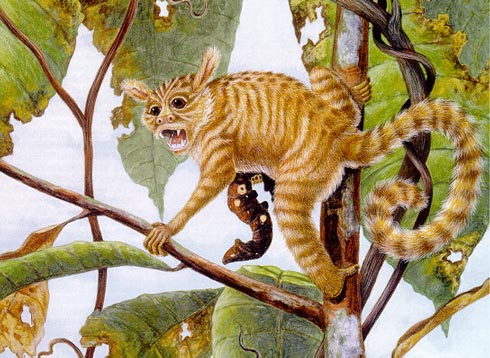Did a Comet Aid the Rise of Mammals? That’s a Wonderful Question!
A Change in Sorting Tray Colour Leads to New Comet Conclusions
The idea that a period of rapid global warming that occurred some 56 million years ago was caused by an extra-terrestrial impact event has been postulated before. However, a team of American scientists, writing in the journal “Science” have published a new paper that supports the idea that a comet striking the eastern coast of North America may have played a role in a dramatic climate change, helping the rise of mammals.
The Rise of Mammals
A change that greatly benefited the Mammalia and helped to establish them as the dominate megafauna on our planet. Indeed, it could be argued that one group of mammals, the primates, did particularly well in the resulting “hot house Earth”, our ancient ancestors got a boost, which in the long-term contributed to our evolution.
For models and replicas of prehistoric animals including creatures from the Eocene: CollectA Deluxe Prehistoric Life Figures.
Fresh evidence to support the idea of a body from outer space crashing into Earth which resulted in a spike in global temperature (referred to as the Palaeocene-Eocene Thermal Maximum or the PETM for short), came when scientists switched from black sorting trays to white-coloured ones when examining drill core sediments from three sites located off the Atlantic coast of the United States.
“Hot House Earth”
The white sorting trays allowed the researchers to identify many more black-coloured, glassy, silica spherules (called microtektites). These objects suggest that there was some sort of high energy impact event, perhaps a six-mile wide comet crashing into the ocean. This would have instigated a rapid release of carbon dioxide into the atmosphere which led to global temperatures rising by around six degrees Celsius over the next thousand years or so.
As temperatures soared, great swathes of the planet became densely forested, the poles were ice free, thus providing a whole range of new habitats for the mammals to exploit.
Spotting Tiny Black Objects Against the Background of a Black Sorting Tray

Microtektites as first seen in a sediment sample from the onset of the Palaeocene-Eocene Thermal Maximum (PETM).
Picture credit: Rensselaer Polytechnic Institute
Finding Microtektites
The tiny, glassy, tear-shaped or round objects, the microtektites have been found in marine sediments from three locations near to the stratigraphic level of the Palaeocene-Eocene boundary. The characteristics of these spherules are consistent with microtektites associated with debris caused during an extra-terrestrial impact.
Morgan Schaller, an Assistant Professor of Earth and environmental sciences at Rensselaer Polytechnic Institute, and corresponding author of the scientific paper, explained that the microtektites provide evidence of a catastrophic impact event having taken place.
He explained:
“This tells us that there was an extra-terrestrial impact at the time this sediment was deposited, a space rock hit the planet. The coincidence of an impact with a major climate change is nothing short of remarkable.”
Assistant Professor Schaller was helped in the research by Professor Miriam Katz and graduate student Megan Fung, (Rensselaer Polytechnic Institute), along with James Wright and Professor Dennis Kent (Rutgers University).
The Impact from a Comet
Professor Kent first postulated the idea that a comet impact could have led to the release of large amounts of CO2 that resulted in climate change back in 2003. He based his theory on magnetised clay particles found in New Jersey that he proposed were altered by the space impact. However, his views have been challenged by a number of other scientists. The idea of a comet striking the Earth has gained further credence following the discovery of relatively large amounts of microtektites from the Palaeocene-Eocene boundary. These objects could have formed when molten material flung out by the impact solidified in mid-air.
A Photograph of One of the Microtektites from the Drill Cores
Picture credit: Megan Fung (Rensselaer Polytechnic Institute)
Black Trays and White Trays
The researchers were searching for micro-fossils in the drill cores (Foraminifera). Assistant Professor Schaller was the first to notice a microtektite in the sediment he was studying. Microtektites have not been found in Palaeocene-Eocene boundary strata in previous studies.
Schaller and his team suggest that this is so as microtektites being typically black are very difficult to spot against the dark colour of sorting trays. When the sediment from the cores was put into white sorting trays the team were able to identify many more. At peak abundance, the research team found as many as three microtektites per gramme of sediment examined.
Comets are known to contain a lot of carbon, an impact from a comet would release a lot of carbon dioxide, the lack of any iridium layer makes an impact from a rocky body such as an asteroid less likely. Hence the suggestion that a comet hit the Earth some 56 million years ago.
Doubts Expressed
A number of scientists remain sceptical with regards to this idea. The size of the microtektites has been noted. They are all extremely small. Professor Christian Koeberl, of the University of Vienna is an impact specialist and although he was not involved in this study, he states that the size of the spherules suggests that either they came from a long way away or that they were produced from a rather small impact event, one that would not have had the power to influence the global climate.
It is also possible that the particles may have been displaced from their original deposition, in the absence of dating information it cannot be confirmed that the microtektites come from the Palaeocene-Eocene boundary.
Rapidly Rising Temperatures May Have Helped the Evolution and Radiation of Primates
Picture credit: Nancy Perkins
This is an intriguing paper, an extra-terrestrial impact very probably played a role in the ending of the “Age of Reptiles”, now it is suggested that ten million years later another impact event provided a stimulus to the radiation and diversification of the mammals.
Visit Everything Dinosaur’s website: Everything Dinosaur.



